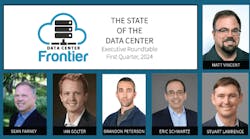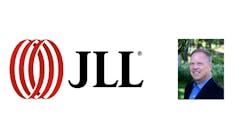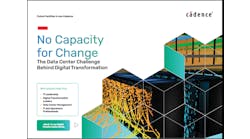Today we continue our Data Center Executive Roundtable, a quarterly feature showcasing the insights of thought leaders on the state of the data center industry, and where it is headed. In today’s discussion, our panel of experienced data center executives – Jack Pouchet of Vertiv, BASELAYER‘s Samir Shah and Erich Sanchack of Digital Realty – discuss the state of data center management software in the age of cloud computing.
The conversation is moderated by Rich Miller, the founder and editor of Data Center Frontier.
Data Center Frontier: Enterprises are deploying more workloads in cloud and hybrid cloud scenarios, but most still maintain legacy on-premises data centers. What challenges does this pose for data center management software (DCIM)? How have the software offerings evolved to meet these challenges?
JACK POUCHET, Vertiv
Jack Pouchet: DCIM platforms have been proven to work extremely well across a single facility or campus environment. With careful planning DCIM can also be effective in monitoring, managing, and controlling company-owned IT assets in remote locations.
However, cloud-based workloads represent an interesting challenge with unique solutions depending upon IT asset ownership and the colocation billing model for off-premise instances. Pure cloud plays under a pay-per-use / instance / workload model are better aligned to cost accounting platforms from an end-user perspective whereas the cloud services provider will likely have their own DCIM instance running across their facilities.
Another way to look at this – use DCIM to manage your IT assets wherever they may be located. Understand the underlying cost differences between on-premise and colocation as the variation in cost, complexity, processing capacity, etc. will all come to play in determining where to run the next application.
Samir Shah, VP of Product Management, BaseLayer
Samir Shah: Data Center Infrastructure Management or DCIM itself is a challenging, crowded and often misunderstood space. There are dozens of DCIM vendors, ranging in capability from PDU monitoring to a complete suite of capacity planning and forecasting. We get customers that are having a difficult time separating the capabilities in what traditionally is called a BMS and what is associated with DCIM.
The hybrid deployment model brings new challenges to the DCIM field. Customers often struggle to define their exact requirements and expectation from a DCIM solution when they have a hybrid environment. DCIMs are evolving to be more open and flexible to integrate cloud infrastructure with on-prem ones, involving multiple 3rd party systems and sometimes proprietary protocols.
DCIM has to bridge the gaps between different networking architecture and security protocols that cloud and enterprise data centers have. The processes used to manage and operate cloud vs enterprise data centers must be implemented in DCIM as well. The hybrid architecture is pushing for DCIM to be more robust, secure, scalable, and flexible to integrate several systems from tightly controlled environments.
“The hybrid deployment model brings new challenges to the DCIM field.”
Samir Shah, BASELAYER
DCIM providers are also adapting their go-to-market strategy and going after the colocation companies and at the same time adding value at the enterprise level. We’ve also seen a surge in cloud based DCIM solutions by new players and established vendors alike.
ERICH SANCHACK, Digital Realty
Erich Sanchack: From a technical perspective, DCIM is DCIM, no matter where it resides. While it can be applied on-premises, in colo facilities or in the cloud, someone is always watching the infrastructure, tuning and tweaking to optimize the environment. What I think you may be asking, though, is, “how does enterprise IT manage the totality of their applications and workloads, given that they may reside in so many different places?”
We are certainly seeing the traditional notions of data center management expanded and even overturned, with the traditional DCIM vendors like Schneider Electric, Vertiv and Nlyte being used for the physical infrastructure, and new monitoring and management solutions like Datadog, New Relic, AppDynamics, AWS CloudWatch and a whole range of others being used to watch and manage application and cloud resource performance. We think we will continue to see expansion of the solution sets to meet specific needs, alongside the usual market consolidation based on larger vendors acquiring smaller, innovative companies.
“We are certainly seeing the traditional notions of data center management expanded and even overturned.”
Erich Sanchack, Digital Realty
Our commitment is to continue to develop the underlying platforms and processes to enable our customers and partners to use whatever combination of technologies they need to meet their needs, wherever their infrastructure and applications may reside.
TOMORROW: The adoption of lithium-ion batteries in data center UPS systems.
Keep pace with the fact-moving world of data centers and cloud computing by following us on Twitter and Facebook, connecting with me on LinkedIn, and signing up for our weekly newspaper using the form below:






